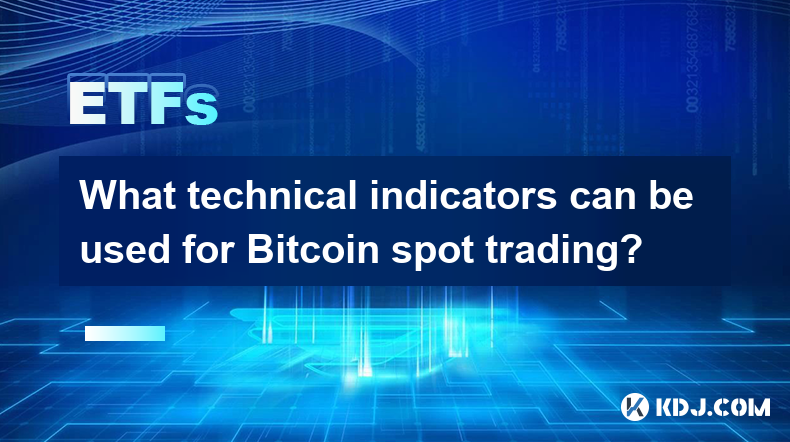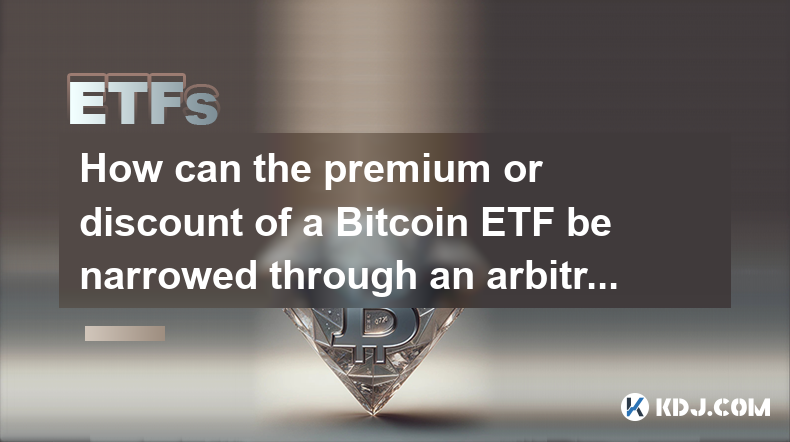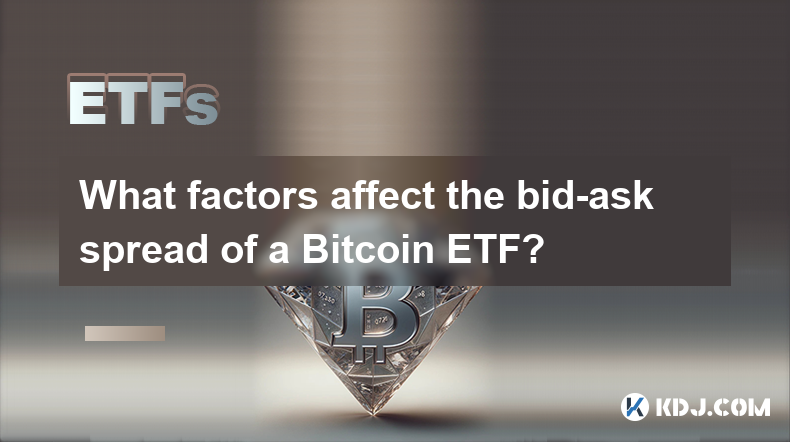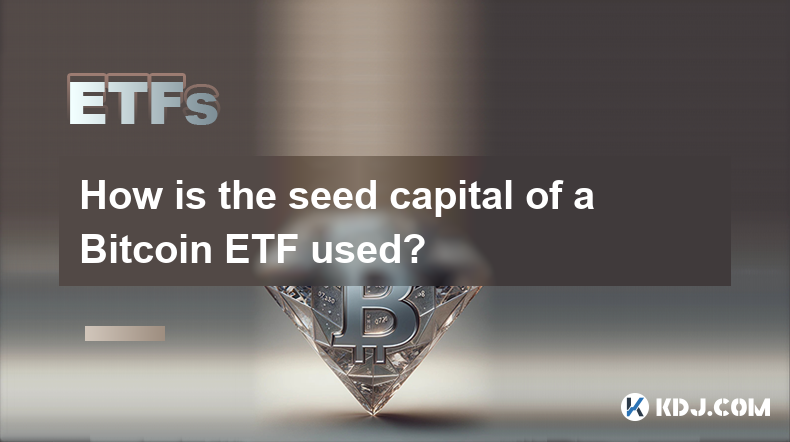-
 Bitcoin
Bitcoin $87,160.3686
2.59% -
 Ethereum
Ethereum $1,577.5291
-0.58% -
 Tether USDt
Tether USDt $1.0000
0.00% -
 XRP
XRP $2.0804
0.22% -
 BNB
BNB $596.3334
0.99% -
 Solana
Solana $136.5658
-0.15% -
 USDC
USDC $1.0000
0.00% -
 Dogecoin
Dogecoin $0.1584
1.77% -
 TRON
TRON $0.2458
-0.32% -
 Cardano
Cardano $0.6208
0.05% -
 Chainlink
Chainlink $13.1006
-1.96% -
 UNUS SED LEO
UNUS SED LEO $9.1412
-1.97% -
 Avalanche
Avalanche $19.9880
2.50% -
 Stellar
Stellar $0.2528
3.56% -
 Shiba Inu
Shiba Inu $0.0...01238
-0.19% -
 Toncoin
Toncoin $2.8930
-3.79% -
 Sui
Sui $2.2031
4.44% -
 Hedera
Hedera $0.1692
1.25% -
 Bitcoin Cash
Bitcoin Cash $343.2002
2.28% -
 Polkadot
Polkadot $3.8296
-1.99% -
 Hyperliquid
Hyperliquid $17.9378
1.39% -
 Litecoin
Litecoin $78.0777
0.75% -
 Dai
Dai $0.9999
0.00% -
 Bitget Token
Bitget Token $4.4322
0.90% -
 Ethena USDe
Ethena USDe $0.9993
0.00% -
 Pi
Pi $0.6347
-0.88% -
 Monero
Monero $214.7110
-0.08% -
 Uniswap
Uniswap $5.2643
-0.22% -
 Pepe
Pepe $0.0...07787
2.99% -
 Aptos
Aptos $4.9970
-0.84%
What technical indicators can be used for Bitcoin spot trading?
Bitcoin spot trading utilizes technical indicators like moving averages (SMA, EMA, WMA), RSI, MACD, Bollinger Bands, and Fibonacci retracements to identify trends, momentum, and potential reversals; however, combining these with fundamental analysis and risk management is crucial for success.
Feb 28, 2025 at 01:12 am

What Technical Indicators Can Be Used for Bitcoin Spot Trading?
Key Points:
- Moving Averages (MA): Understanding different types of MAs (Simple, Exponential, Weighted) and their applications in identifying trends and potential reversal points. We'll delve into the practical usage of various periods (e.g., 50-day, 200-day MAs) and crossover strategies.
- Relative Strength Index (RSI): Analyzing RSI values to gauge momentum and identify overbought and oversold conditions. We will explore the nuances of RSI divergence and its significance in predicting trend changes.
- MACD (Moving Average Convergence Divergence): Interpreting MACD histograms and lines to spot momentum shifts and potential trend reversals. We will examine how to utilize MACD crossovers and divergences for improved trading decisions.
- Bollinger Bands: Utilizing Bollinger Bands to assess volatility and identify potential price reversals. We will discuss the practical application of standard deviations and band squeezes in spot trading strategies.
- Fibonacci Retracements: Applying Fibonacci retracement levels to identify potential support and resistance levels during price corrections. We will explore how to integrate Fibonacci retracements with other indicators for more accurate predictions.
Technical Indicators for Bitcoin Spot Trading:
Moving Averages (MA): Moving averages smooth out price fluctuations, making it easier to identify trends. There are several types:
- Simple Moving Average (SMA): This is the most basic type, calculated by averaging the closing prices over a specified period. A 50-day SMA is commonly used to identify short-term trends, while a 200-day SMA is often used to identify long-term trends. Traders often look for "crossovers" – when a shorter-term MA crosses above a longer-term MA (bullish signal) or below it (bearish signal). For example, a 50-day SMA crossing above a 200-day SMA is considered a strong bullish signal, suggesting a potential uptrend. However, it's crucial to remember that this signal is not foolproof and should be combined with other indicators for confirmation. The choice of period depends on the trader's timeframe and risk tolerance. A shorter period like 10-day SMA is highly sensitive to short-term price fluctuations, offering quick signals but also generating more false signals. Conversely, a longer period like 200-day SMA provides a smoother trend line, but signals might come late, potentially missing short-term opportunities. Understanding the relationship between the chosen period and the trader's strategy is paramount. The effectiveness of SMA also depends on the market conditions. In highly volatile markets, the signal lag of SMA might be significant, reducing its accuracy. Conversely, in stable markets, SMA might provide more reliable signals. Therefore, traders should always adapt their strategy based on the current market dynamics.
* **Exponential Moving Average (EMA):** The EMA gives more weight to recent prices, making it more responsive to changes in price than the SMA. This makes it a preferred choice for traders who focus on short-term price movements. The EMA is calculated using a smoothing factor that determines how much weight is given to recent prices. A higher smoothing factor results in a more responsive EMA. Similar to SMA, EMA crossovers are used as trading signals, with a short-term EMA crossing above a long-term EMA indicating a bullish signal and vice-versa. The selection of the appropriate period for EMA depends on the trader's preferred trading style and market conditions. A shorter period, like a 12-day EMA, can provide faster signals but may be more susceptible to noise, while a longer period, such as a 26-day EMA, will offer smoother signals but might lag behind short-term price movements. Traders often combine different EMA periods to generate signals, such as using a 12-day EMA and a 26-day EMA to form the MACD indicator.
* **Weighted Moving Average (WMA):** The WMA assigns more weight to recent prices than the SMA, but less than the EMA. It offers a balance between responsiveness and smoothness. The weights assigned to each price are determined by a formula that emphasizes recent prices. Like SMA and EMA, WMA crossovers can be used as trading signals. However, the interpretation and timing of these signals might vary compared to SMA and EMA. The choice between SMA, EMA, and WMA depends on the trader's individual preferences and trading style, as well as the characteristics of the market being traded. For example, in a highly volatile market, the EMA might be preferred due to its responsiveness, while in a less volatile market, the SMA might be sufficient.
- Relative Strength Index (RSI): The RSI measures the magnitude of recent price changes to evaluate overbought or oversold conditions in the market. An RSI value above 70 is generally considered overbought, suggesting a potential price correction or reversal. Conversely, an RSI value below 30 is generally considered oversold, suggesting a potential price bounce. However, these levels are not absolute and can vary depending on the market and asset. RSI divergence, where the price makes a new high but the RSI fails to make a new high (bearish divergence), or vice versa (bullish divergence), can be a strong indication of a potential trend reversal. Understanding RSI divergence requires careful observation of price action and RSI behavior. For instance, a bullish divergence might be identified when the price makes a lower low, but the RSI forms a higher low. This divergence suggests that buying pressure is increasing despite the price decline, indicating a potential upward price reversal. However, RSI divergence is not a guaranteed signal and should be used in conjunction with other technical indicators to confirm the potential reversal. The effectiveness of RSI as a leading indicator is often debated. While it can identify potential reversals, it's not always accurate, and false signals are possible. RSI's effectiveness also depends on the chosen time frame. A shorter time frame might generate more false signals, while a longer time frame might provide more reliable but delayed signals.
- MACD (Moving Average Convergence Divergence): The MACD is a trend-following momentum indicator that shows the relationship between two moving averages. It consists of a MACD line, a signal line, and a histogram. The MACD line is the difference between a 12-period EMA and a 26-period EMA. The signal line is a 9-period EMA of the MACD line. A bullish signal occurs when the MACD line crosses above the signal line, while a bearish signal occurs when the MACD line crosses below the signal line. The histogram represents the difference between the MACD line and the signal line. MACD divergence, similar to RSI divergence, can also be a powerful signal. A bullish divergence occurs when the price makes lower lows, but the MACD makes higher lows, indicating potential upward momentum. Conversely, a bearish divergence occurs when the price makes higher highs, but the MACD makes lower highs, suggesting potential downward momentum. However, interpreting MACD signals requires practice and experience. False signals are possible, and traders should combine MACD with other indicators to confirm trading decisions.
- Bollinger Bands: Bollinger Bands are volatility indicators that consist of three lines: a middle band (a simple moving average), an upper band (two standard deviations above the middle band), and a lower band (two standard deviations below the middle band). Price tends to bounce off the upper and lower bands. When the bands contract, it indicates low volatility, and a breakout from the bands can signal a significant price movement. When the bands expand, it indicates high volatility. Bollinger Bands are particularly useful in identifying potential breakouts and reversals. For example, a price break above the upper band can be considered a strong bullish signal, while a break below the lower band can be a strong bearish signal. However, these signals are not always accurate, and traders should use caution. The effectiveness of Bollinger Bands depends on various factors, including the chosen period for the moving average and the market conditions. In highly volatile markets, Bollinger Bands can expand significantly, leading to more false breakouts. In less volatile markets, Bollinger Bands might contract, making it difficult to identify significant price movements.
- Fibonacci Retracements: Fibonacci retracements are based on the Fibonacci sequence (0, 1, 1, 2, 3, 5, 8, 13, 21, etc.). These retracement levels (23.6%, 38.2%, 50%, 61.8%, 78.6%) are used to identify potential support and resistance levels during price corrections. Traders often look for price bounces at these levels. However, Fibonacci retracements are not always accurate, and price may not always bounce at these levels. They should be used in conjunction with other indicators to confirm potential support and resistance levels. For example, if the price has experienced a significant upward move, traders might look for support at the 38.2% or 61.8% retracement levels. If the price successfully bounces off these levels, it can confirm the strength of the underlying uptrend. However, it is crucial to note that the accuracy of Fibonacci retracements depends on the accuracy of identifying the swing high and swing low points. Inaccurate identification of these points can lead to inaccurate retracement levels and flawed trading decisions.
FAQs:
Q: Are these indicators sufficient for successful Bitcoin spot trading?
A: No. Technical indicators are tools, not guarantees. Successful trading requires a holistic approach combining technical analysis with fundamental analysis, risk management, and emotional discipline. Using multiple indicators and confirming signals is crucial.
Q: Which indicator is the "best"?
A: There's no single "best" indicator. The optimal choice depends on your trading style, timeframe, and risk tolerance. Experimentation and backtesting are key to finding the indicators that work best for you.
Q: How do I avoid false signals?
A: Combine multiple indicators. Confirm signals from different sources before entering a trade. Use proper risk management techniques to limit potential losses from false signals. Pay close attention to market context and news events.
Q: Can I use these indicators for other cryptocurrencies besides Bitcoin?
A: Yes, these technical indicators can be applied to other cryptocurrencies, but remember that market dynamics vary across different assets. Adjust your strategies and parameters accordingly.
Q: What is backtesting, and why is it important?
A: Backtesting involves testing your trading strategy on historical data to evaluate its performance. It helps identify potential flaws in your strategy and optimize your approach before using real capital.
Q: What is risk management, and how does it relate to technical indicators?
A: Risk management is crucial in trading. It involves setting stop-loss orders to limit potential losses and determining position sizing to control risk exposure. Even with accurate signals from technical indicators, unforeseen market events can lead to losses. Proper risk management helps mitigate these risks.
Q: How do I learn more about these indicators?
A: There are numerous online resources, including educational websites, books, and courses, that can provide a deeper understanding of technical analysis and these indicators. Practice is crucial. Start with paper trading (simulated trading) to gain experience before risking real capital.
Disclaimer:info@kdj.com
The information provided is not trading advice. kdj.com does not assume any responsibility for any investments made based on the information provided in this article. Cryptocurrencies are highly volatile and it is highly recommended that you invest with caution after thorough research!
If you believe that the content used on this website infringes your copyright, please contact us immediately (info@kdj.com) and we will delete it promptly.
- Lightchain AI: The Future of Cryptocurrency
- 2025-04-22 05:30:13
- Coinbase Expands XRP Futures Contracts Trading
- 2025-04-22 05:30:13
- Difficulty Spike and Hashrate Drop Lengthen Block Times
- 2025-04-22 05:25:13
- Despite the Harshest Profit Squeeze in Half a Decade, Bitcoin Mining on U.S. Soil is Consolidating and Gathering Momentum
- 2025-04-22 05:25:13
- Bitcoin (BTC) markets ticked higher
- 2025-04-22 05:20:13
- Shiba Inu (SHIB) and Lightchain AI (LCAI) Are Rapidly Gaining Ground, Positioning Themselves as Serious Competitors to Dogecoin.
- 2025-04-22 05:20:13
Related knowledge

What is the difference in returns between long-term holding of a Bitcoin ETF and holding Bitcoin directly?
Apr 09,2025 at 04:15am
When considering the difference in returns between long-term holding of a Bitcoin ETF and holding Bitcoin directly, it's essential to understand the nuances and factors that affect each investment option. Both approaches have their unique advantages and potential drawbacks, which can significantly impact the overall returns over time. Understanding Bitc...

How is the "roll cost" of a futures Bitcoin ETF generated?
Apr 08,2025 at 01:22pm
The 'roll cost' of a futures Bitcoin ETF is a critical concept for investors to understand, as it directly impacts the performance of the ETF. In this article, we will delve into the mechanics of how the roll cost is generated, exploring the underlying processes and factors that contribute to this cost. Understanding Futures ContractsFutures contracts a...

How can the premium or discount of a Bitcoin ETF be narrowed through an arbitrage mechanism?
Apr 09,2025 at 12:07am
Arbitrage mechanisms play a crucial role in narrowing the premium or discount of a Bitcoin Exchange Traded Fund (ETF). Understanding how these mechanisms work can provide valuable insights into the dynamics of Bitcoin ETFs and their relationship with the underlying asset. This article will delve into the specifics of how arbitrage can be used to align t...

What factors affect the bid-ask spread of a Bitcoin ETF?
Apr 08,2025 at 08:50pm
The bid-ask spread of a Bitcoin Exchange Traded Fund (ETF) is a critical metric that investors and traders closely monitor. It represents the difference between the highest price a buyer is willing to pay (bid) and the lowest price a seller is willing to accept (ask). Several factors influence this spread, and understanding them can help investors make ...

How is the seed capital of a Bitcoin ETF used?
Apr 10,2025 at 02:15pm
The seed capital of a Bitcoin ETF plays a crucial role in the establishment and operation of the fund. This initial investment is used to create the fund's underlying assets, manage operational costs, and ensure the ETF can start trading on an exchange. Understanding how this seed capital is utilized provides insight into the mechanics of Bitcoin ETFs a...

What is the difference between "physically backed" and "synthetic" Bitcoin ETFs in terms of holding assets?
Apr 10,2025 at 04:56pm
Bitcoin Exchange Traded Funds (ETFs) have become a popular way for investors to gain exposure to the cryptocurrency market without directly owning the underlying asset. There are two primary types of Bitcoin ETFs: physically backed and synthetic. Understanding the differences between these two types, particularly in terms of how they hold assets, is cru...

What is the difference in returns between long-term holding of a Bitcoin ETF and holding Bitcoin directly?
Apr 09,2025 at 04:15am
When considering the difference in returns between long-term holding of a Bitcoin ETF and holding Bitcoin directly, it's essential to understand the nuances and factors that affect each investment option. Both approaches have their unique advantages and potential drawbacks, which can significantly impact the overall returns over time. Understanding Bitc...

How is the "roll cost" of a futures Bitcoin ETF generated?
Apr 08,2025 at 01:22pm
The 'roll cost' of a futures Bitcoin ETF is a critical concept for investors to understand, as it directly impacts the performance of the ETF. In this article, we will delve into the mechanics of how the roll cost is generated, exploring the underlying processes and factors that contribute to this cost. Understanding Futures ContractsFutures contracts a...

How can the premium or discount of a Bitcoin ETF be narrowed through an arbitrage mechanism?
Apr 09,2025 at 12:07am
Arbitrage mechanisms play a crucial role in narrowing the premium or discount of a Bitcoin Exchange Traded Fund (ETF). Understanding how these mechanisms work can provide valuable insights into the dynamics of Bitcoin ETFs and their relationship with the underlying asset. This article will delve into the specifics of how arbitrage can be used to align t...

What factors affect the bid-ask spread of a Bitcoin ETF?
Apr 08,2025 at 08:50pm
The bid-ask spread of a Bitcoin Exchange Traded Fund (ETF) is a critical metric that investors and traders closely monitor. It represents the difference between the highest price a buyer is willing to pay (bid) and the lowest price a seller is willing to accept (ask). Several factors influence this spread, and understanding them can help investors make ...

How is the seed capital of a Bitcoin ETF used?
Apr 10,2025 at 02:15pm
The seed capital of a Bitcoin ETF plays a crucial role in the establishment and operation of the fund. This initial investment is used to create the fund's underlying assets, manage operational costs, and ensure the ETF can start trading on an exchange. Understanding how this seed capital is utilized provides insight into the mechanics of Bitcoin ETFs a...

What is the difference between "physically backed" and "synthetic" Bitcoin ETFs in terms of holding assets?
Apr 10,2025 at 04:56pm
Bitcoin Exchange Traded Funds (ETFs) have become a popular way for investors to gain exposure to the cryptocurrency market without directly owning the underlying asset. There are two primary types of Bitcoin ETFs: physically backed and synthetic. Understanding the differences between these two types, particularly in terms of how they hold assets, is cru...
See all articles






















































































